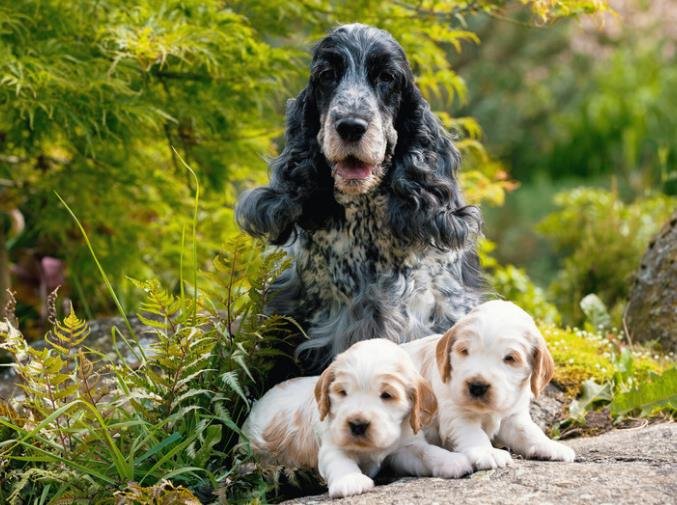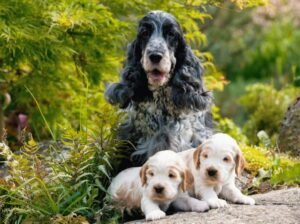
These 7 signs indicate that your dog is entering old age
Dogs, like humans, also age and age much faster than humans.

Dogs of different breeds and body types have different times of entering old age. The larger the dog, the shorter its lifespan and the faster it ages. It is generally believed that large dogs like the Great Dane are already considered elderly dogs at the age of 5-6, while small dogs like the Chihuahua are not considered elderly dogs until the age of 10-11.
However, each individual dog is different, and there will also be differences in their age when they age. But once you discover that your dog has the following seven situations, then it is certain: the dog is getting old!
one
Vision problems
When a dog walks, it may collide with objects around it, even fall, and sometimes show discomfort in its eyes, such as redness and cloudiness, indicating that it may have developed vision problems and eye diseases.
Visual impairment is a component of the aging process, and as people age, the lenses of many dogs become cloudy. Although this can be considered a normal phenomenon, it does indeed affect vision.
If your dog has vision problems, it is recommended to seek medical attention. Dogs’ vision problems may also be caused by diseases such as corneal injury, dry eye syndrome, and conjunctivitis, all of which can be treated.
Once a dog loses all its vision, it is usually irreversible, but it can also be made easier to live in a dark world through some environmental modifications.
two
Increased urination
An increase in urine output or difficulty urinating in dogs may be a sign of kidney disease or urinary tract infection, which is very common in middle-aged and elderly dogs.
Difficulty urinating or urinary incontinence can be treated and relieved, and in either case, it is recommended to seek medical attention as soon as possible.
three
Oral problems
If a dog does not have the habit of regularly brushing their teeth and has never undergone professional teeth cleaning, then as they age, they will definitely have oral problems, including bad breath, excessive drooling, gum inflammation, loose teeth, and so on.
Good oral hygiene habits are the simplest and most effective way to maintain a dog’s oral health. The best habit is to brush your teeth regularly, at least twice a week.
four
Skin issues
Dogs of any age group may experience skin problems, but older dogs are more common, with common symptoms including rashes, lumps, dryness, hair loss, and so on.
Many skin problems can be relieved or even cured through treatment and home care.
As the dog ages, there may be lumps under the skin, some of which are benign and some are malignant. Regardless, if a lump is found, immediate medical attention and early treatment should be sought. Especially when a lump is newly discovered and grows rapidly, or changes in color, shape, or size, immediate medical attention should be sought.
five
Weight change
After some dogs get old, their digestive function decreases and they need foods with higher calories or better palatability; Some dogs also experience a decrease in exercise volume and a significant increase in weight as they age.
Whether overweight or underweight, it can lead to the occurrence of diseases. It is recommended that in old age, dogs should switch to more suitable food based on their weight changes and health status.
In addition, it is also necessary to develop a suitable exercise plan for elderly dogs that suits their physical condition. Because life lies in movement, especially for elderly dogs.
six
Difficulty in action
If you find that a dog that used to be very lively is no longer as active, and even less enthusiastic about playing their favorite games, it is likely because the dog has contracted diseases such as arthritis.
Arthritis is almost a disease that dogs will suffer from after aging. (Recommended reading: Half of dogs aged 5 to 10 will suffer from this disease. How to prevent it?)
seven
Behavioral and memory disorders
During the aging process of dogs, in addition to physical aging, there is also aging of the brain, and some dogs may suffer from cognitive impairment in dogs.
For example, when a dog suddenly loses direction at home and bumps around, the places it used to walk around often become unfamiliar, and its personality may also change.
These “little things” cannot be ignored. They are not becoming lazy or bad, but rather getting old.
American Dingo animal behavior Budget Tips canine behavior Canine Care Canine Health Dehydration dog age dog behavior Dog Breeds dog care Dog Care Tips dog exercise dog flea treatment Dog Food Dog Grooming dog health dog nutrition dog ownership Dog Sleep Tips Dog Training Dog Wound Care Family Pets First Aid Giardia Prevention Healthy Pets Hunting Dogs newborn puppy care Parasites in Dogs Pet Care Pet Care Tips Pet Health Pet Safety pet tips pet training Positive Reinforcement Potty Training prevent flea bites Puppy Care puppy health Puppy Training Rabies in Dogs Training Tips veterinary advice Veterinary Care
-
 How to Tell If Your Dog Has a Broken Bone
5 views
How to Tell If Your Dog Has a Broken Bone
5 views -
 Which is the best way to keep a small dog
4 views
Which is the best way to keep a small dog
4 views -
 Why Do Dogs Lay in the Sun? 6 Possible Reasons
3 views
Why Do Dogs Lay in the Sun? 6 Possible Reasons
3 views -
 Why Do Dogs Chase Cats? Understanding the Age-Old Rivalry
3 views
Why Do Dogs Chase Cats? Understanding the Age-Old Rivalry
3 views -
 How to Use an Ehmer Sling: A Comprehensive Guide
3 views
How to Use an Ehmer Sling: A Comprehensive Guide
3 views -
 Detailed methods for raising Tosa dogs
3 views
Detailed methods for raising Tosa dogs
3 views -
 Understanding Why Dogs Lick Their Owners’ Privates
3 views
Understanding Why Dogs Lick Their Owners’ Privates
3 views -
 Why Do Dogs Eat Rabbit Poop?
3 views
Why Do Dogs Eat Rabbit Poop?
3 views -
 How to Tell if Your Dog is in Pain: Key Signs and Symptoms
3 views
How to Tell if Your Dog is in Pain: Key Signs and Symptoms
3 views -
 How to Clean a Dog’s Wound: A Step-by-Step Guide
3 views
How to Clean a Dog’s Wound: A Step-by-Step Guide
3 views










Leave a Reply
You must be logged in to post a comment.